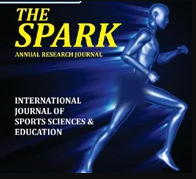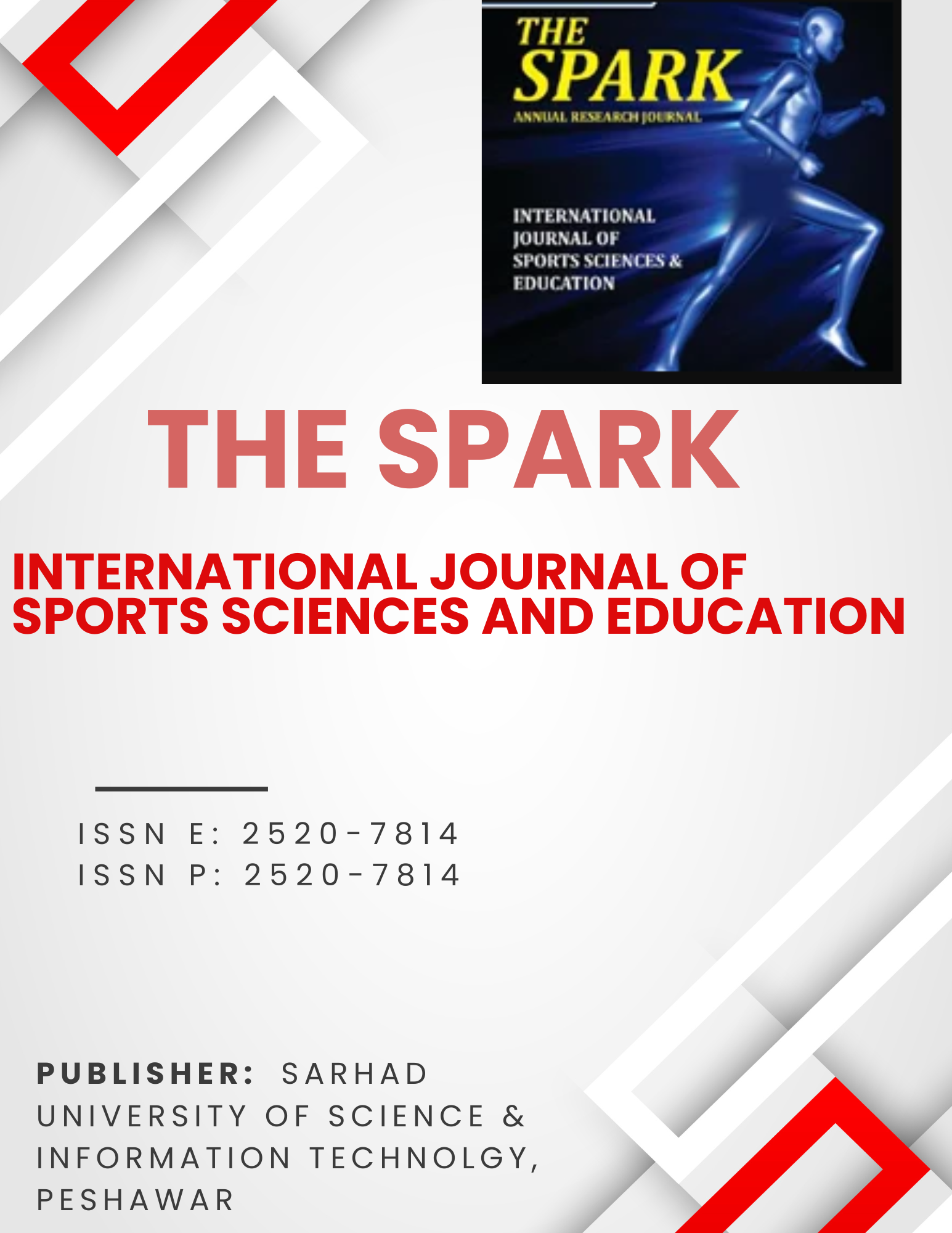PHYSICAL FITNESS PARAMETERS OF SCHOOL GOING CHILDREN OF KHYBER PUKHTUNKHWA-PAKISTAN
Keywords:
Physical fitness tests battery, survey, children, and norms.Abstract
The aim of the study was to measure and evaluate the physical fitness of school going children aged 11 to 15 years through cross-sectional survey in Khyber Pukhtukhwa. Seven universally accepted field-based tests having known reliability were used to assessthe anthropometric status, balance, body muscle strength, flexibility, speed and agility, cardiovascular endurance and muscular endurance. Boys showed gradual increase in their performance from 11 to 14 years while it tends to decrease at the age of 15 years. The correlation coefficient among tests is significant however relationship is weak reflecting fitness as multidimensional concept.Multiple Regression analysis predicts that all tests are independently related to the performance. The analysis reveals that about 40% of school going children falls in the categories of “Very Poor†and “Poor†level of abilities. The evaluated physical fitness parameters of children if used as bench marks instead of compulsive division into norms would be more reliable developmental characteristics for comparison with their counterparts elsewhere and determining national norms and policies related to youth as way forward.
References
Bianco,A. et al, (2015). A systematic review to determine reliable and usefulnessof the field-based tests batteries for the assessment of physical fitness of adolescents- the ASSO project, International Journal of Occupational Medicine and Environmental Health; 28 (3):445-478.
Cauderay, M., Narring, F. and Michaud, Pierre- Andre, (2000). A cross-sectional survey assessing physical fitness of 9 to 19year-old girls and boys in Switzerland, Pediatric Exercise Science, 12, 398-412.
Council of Europe (1993). EUROFIT: Handbook for Eurofit Tests of Physical Fitness.
DraganCvejić, Tamara Pejović andSergejOstojić.(2013). Assessment of physical fitness in children and adolescents.Physical Education and Sport,Vol. 11, No 2, 2013, pp. 135 – 145.
Erikoglu, O., Guzel, N.A., Pense, M. andOrer, G.E., (2015), Comparison of physical fitness parameters with Eurofit test battery of male adolescent soccer players and sedentary counterparts, International Journal of Science Culture and Sport (IntJSCS), 3 (3), pp. 43-52.
Government of India, (2012).Exposure draft on National Physical fitness Programme for school children, Ministry of Youth and Sports, Department of Sport, pp. 1-75.
Government of Pakistan, (2017).Pakistan Education Statistics 2015-16, National Education Management Information System, Islamabad: AEPAM
Haga, M. (2008).Physical fitness in children with movement difficulties.Physiotherapy, 94 (3), 253-259.
Hokelmann, A. (2016). Association of cognitive and physical activities- an unpublished lecture at SUIT, Pakistan.
Houwen, S., (2006). Test- retest reliability of euro physical fitness items for children with visual impairments. Pediatric Exercise Science, Human Kinetics, 18:300-313.
Howley, E.T. and Franks, B.D. (2003), Health Fitness Instructor’s Handbook, IL: Human Kinetics Publishers.
Levin, H.(2009).The economic payoff to investing in educational justice, Educational Researcher, 38(1),pp.5-20
Pal, S. and Ghosh, M.C., (2015). A comparative study on AAHPER youth fitness test norms with a newly constructed percentile norms of 13 years boys, International Journal of Applied Research, 1(8), 662-665.
Pate, R.R., (1988).The evolving definition of physical fitness, Quest, 40(3), 174-9.
Sanker Reddy, A. (2010). “Survey of physical fitness among school boys of Rayalaseema region of Andhra Pradesh and the influence of intensive physical activity programme on themâ€. An unpublished Ph.D. thesis submitted in Pondicherry University, India.
Downloads
Published
How to Cite
Issue
Section
License
Submission of an original manuscript to the Journal will be taken to mean that it represents original work not previously published, that it is not being considered elsewhere for publication. And if accepted for publication, it will be published in print and online and it will not be published elsewhere.
The journal main policy reflects in its stance that the publication of scholarly research is exclusively meant to disseminate knowledge and not-for-purposes.








 Name of Journal:
Name of Journal: 